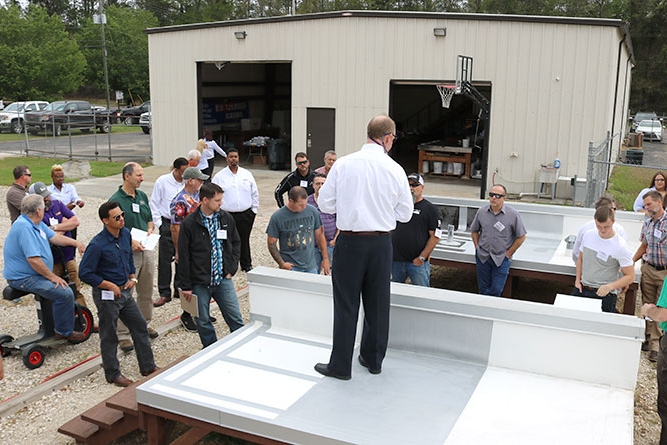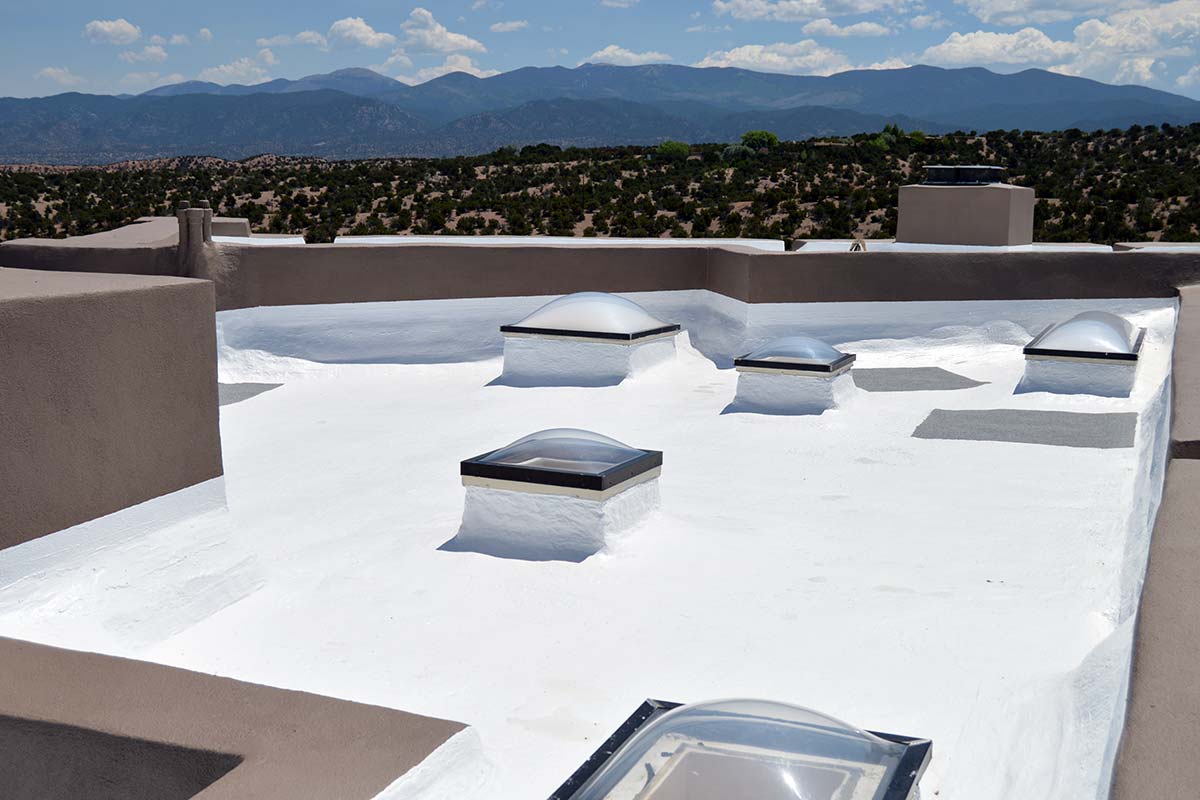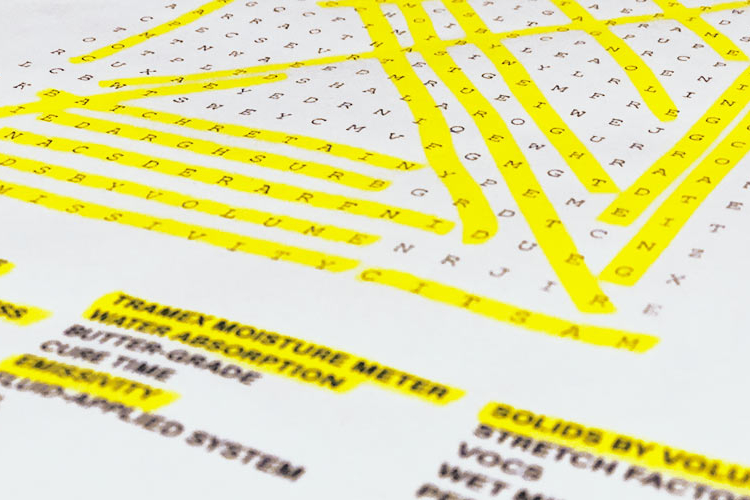Many maintenance workers and engineering managers have been misled about fluid-applied roof coating systems, and have developed a series of myths and misconceptions as a result. These misconceptions often are far-fetched, and some are even the result of misleading salespeople.
Complicating the situation are the varying views and experiences of managers and building owners in institutional and commercial facilities. To some managers, a roof is the most foreign building component in their facilities for which they are responsible. Some managers might only have to make a roof replacement, or restoration, decision once in their careers, and it can be the most complex project they will ever take on. They also might not ever have set foot on their roofs, even though it might have outlasted every other building component.
The cost of tearing off and replacing a roof system can be staggering. Even restoring a roof at one-half of the cost of replacement can be more than enough to give a manager a major headache. For all of these reasons, it is important that managers address their myths and misconceptions by better understanding important issues related to coating specification, installation and maintenance.
#1 Roof coatings don’t work
Yes, roof coatings do work. When installed properly, some fluid-applied systems are as good as, or even better than the original roof.
On commercial, low-slope roofs, the ultraviolet (UV) stability of a silicone coating system is unmatched. For durability, urethane coating systems have stood the test of time and have proven able to withstand ponding water when applied appropriately. Hybrid systems that use two different chemistries that complement each other’s physical properties have become desirable because they offer the extra protection needed when using silicone.
Many manufacturers offer 10-, 12-, 15-, and even 20-year system warranties. This is an important issue when it comes to extending the performance and service life of roof systems. I cannot think of a manufacturer that writes a warranty on a roof system without requiring, at least, annual maintenance. A roof is not much different than any other part of a facility, with one exception: People rarely see the roof. “Out of sight, out of mind” is the old saying.
But if a department does not perform annual roof maintenance, the first time a manager becomes aware of a problem often is when it appears in the building in the form of a leak. If technicians do not catch the problem soon enough, it can lead to so much damage that the option to restore is no longer part of the equation. This situation is unfortunate, and managers can avoid it by scheduling annual inspections that cost just pennies a square foot to perform.
Spotting a fish-mouthed seam or a pitch pan that needs more sealant sooner rather than later can save a great deal of money and headaches. No manager wants to find out after a roof leaks that roof drains were clogged. To prevent such problems, managers first should schedule an inspection and removal of debris in order to avoid the costs to make the repairs inside the building later.
Managers need to send someone onto the roof every year and possibly every six months, whether it occurs before the rainy season or in fall while all the leaves are blowing around to prevent them from clogging the drains. Maintenance is a necessity for every roof — no ifs, ands, or buts.
#2 A new roof is disruptive
This statement is not necessarily true. Fluid-applied roof systems typically are not disruptive at all. Application involves very little noise to speak of, compared to a tear-off and replacement. Recent years have seen a big swing away from using large commercial spray equipment and toward the use of large mechanical carts. These carts make little noise and eliminate the possibility of overspray when using spray equipment.
In the case of metal roofs, spray equipment still is the best option for contractors who want to provide a quality system in a reasonable timeframe. Installers can use specialized equipment to roll coatings onto metal roofs. While this process is not disruptive to facility operations, it can increase the time it takes to complete the project. But there is certainly a place for it in the industry.
#3 Warranties do not matter
Managers have to be careful when it comes to warranties. Read the fine print, and ask questions. The investment in the roof system needs to last as long as possible, so managers have to understand the warranty process, including the costs for a leak or a failure, before signing the contract. Paying attention to the details can prevent long-term, costly headaches.
Some coatings actually perform well in ponding water. Manufacturers selling roll goods — modified and single-ply systems — specify no ponding water after a day or two as a limitation of the product. It is best practice to eliminate ponding water for many reasons. When tearing off and replacing a roof, this is easily done with a new taper system, which can be a costly part of a reroofing project.
When it comes to fluid-applied roof systems, managers have to work with the roof system as it is. After all, these products are being installed directly to the surface of the existing roof. Whether ponding water is present or not, the potential exists when restoring a flat roof. Why not use a system that is designed to withstand ponding water?
Acrylic, water-based coatings break down under ponding water over time. If it rains often and ponds remain for extended periods, these areas eventually will fail. Solvent-based systems are a solid solution these days with some of the hybrid, dual-chemistry systems providing the best protection.
#4 I can’t get an FM coating
Yes, managers can, but they have to be careful. Factory Mutual (FM) approvals are for complete systems, which include everything from the roof deck to the top of the coating system. If an insurance carrier requires an FM-rated system, the existing roof system already should be an FM system. It was tested and approved by Factory Mutual as a system.
That new roof coating has to be tested the same way. The new coating and the current system have to be tested together to receive an FM approval. The selected manufacturer and contractor should be able to provide FM approvals.
#5 Anyone can install a coating
This is not true. Most manufacturers require that their contractors be approved to install their coating systems. While there might be a material warranty for the stuff in the bucket, to get a labor and material warranty, the manufacturer should approve the contractor.
The approval process varies by manufacturer, so managers need to ask the contractor for a certificate and verify with the manufacturer that the desired warranty is available from the chosen contractor. It is far better to ask questions before a project starts than to find out after it is completed that the contractor cannot deliver a warranty.
Managers must ask the contractor to explain the proposal, and not get just the customary three bids and choose the lowest price. The lowest bid might not be the most qualified bid. They need to review each proposal and weigh it against the price. A significant difference exists between painting a roof white and installing an energy saving, coating system that extend’s a roof’s service life. Managers must choose wisely because the selected roof coating typically is a 10- to 20-year investment and their only chance to make a smart choice.
This article was provided on behalf of the Roof Coatings Manufacturers Association (www.roofcoatings.org) by Scott Gayle of American WeatherStar.
Related Posts
Getting Started in the Roof Restoration Industry
If you are not in the restoration business as a commercial roofing contractor, you are missing out on a huge opportunity. Many roofing…
What Are the Benefits of a Cool Roof?
Cool roofs are on the rise due to an increased recognition that cool roofs can help your building or home be more comfortable and…
Industry Vocabulary Words: Solids by Volume
Often times you will see spec writers using solids by volume to differentiate one coating from another, or better said, to rule out certain…



